Hygiene and a choice of homogenous and focal designs are driving the look and functionality of wet areas, including both sinks and kitchen taps
While the role of the kitchen sink area has remains unchanged – that of food preparation – the reliance on it to have a singular look has been eradicated.
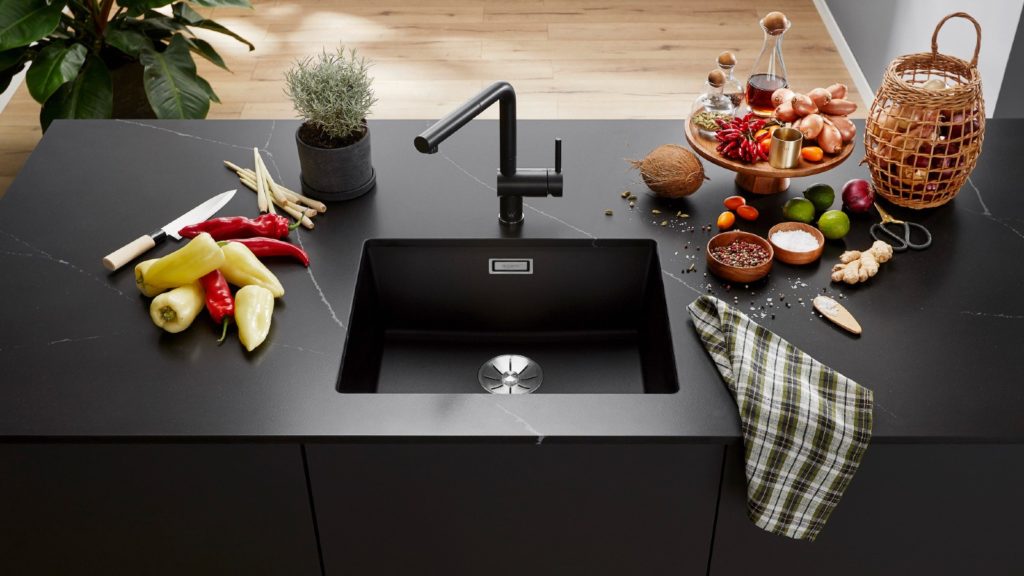
Adding to its Silgranit range of sinks, Blanco has now introduced a black finish, shown on its Subline 500 model. Silgranit is reportedly scratch-, heat-, impact-, light-, and acid-resistant and boasts Hygienic+Plus to repel bacteria.
Sink and tap design caters for a variety of lifestyles and interior decors, with an ever-increasing array of models and materials.
Sponsored Video
Marketing manager at Abode Leanne Adamson points out: “There is certainly more emphasis on material choice than ever before, rather than a more general focus on stainless steel for the contemporary setting and ceramic for the classic look.”
And in fact, brand manager of Perrin & Rowe EMEAA Jonathan Britton points out for Shaws of Darwen its decorative apron fronted ceramic sinks “seem to defy pigeon-holing as farmhouse style and are increasingly installed in modern and eclectic kitchens.”
Introducing colour
In fact, there has been a shift in design introducing colour, whether spanning warmer metallics monochrome or neutral hues with granite models.
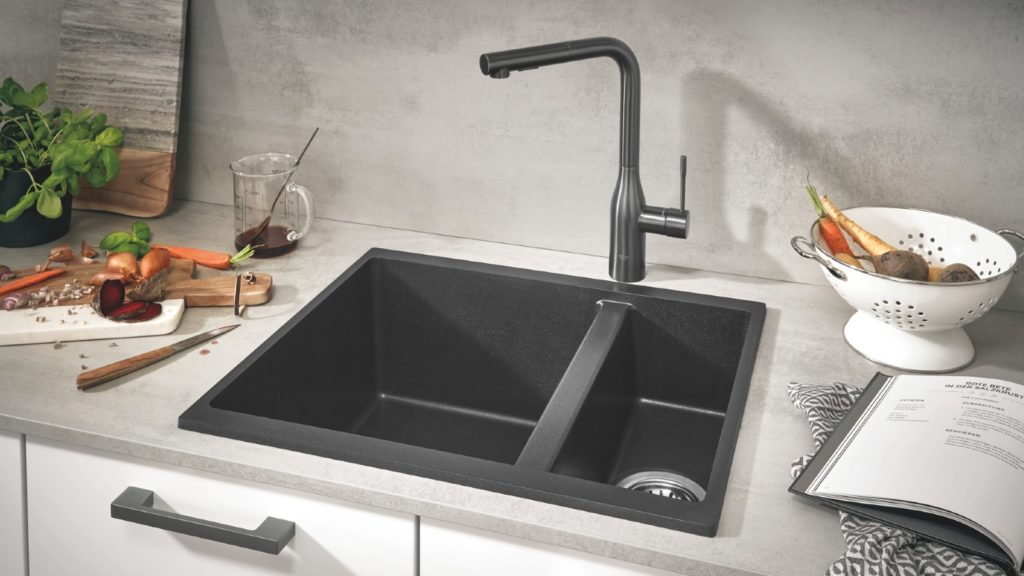
The Grohe K500 series of composite sinks features 1, 1.5 and double bowl options and features integrated drainers on some models. They are available with automatic waste-fitting
So much so, consumer marketing manager at CDA Carrie Bell expresses: “We believe in offering as much choice in sinks and taps as we do in appliances.”
Training manager at Grohe UK Adam Logan points out why there is now such a focus on design by kitchen sink experts: “Previously, a sink needed to be functional, hygienic, easy to clean and durable.
“Now the sink still needs to be all those things but also beautiful and equipped with additional design features that make the functional aspects, such as cleaning and doing the dishes much more ergonomic and fuss-free.”
However, Logan believes the trend for industrial kitchens is creating an influence in sink sales. He continues: “Most recently, we are seeing an increasing trend for composite finishes in black and graphite to meet the growing demand for industrial-styled kitchens. We expect strong and continuous growth in this area.
Open-plan pressure
Certainly open-plan kitchens have drawn attention to the sink area and there has been a clear demarcation between styles that create focal points or blend homogenously into the scheme.
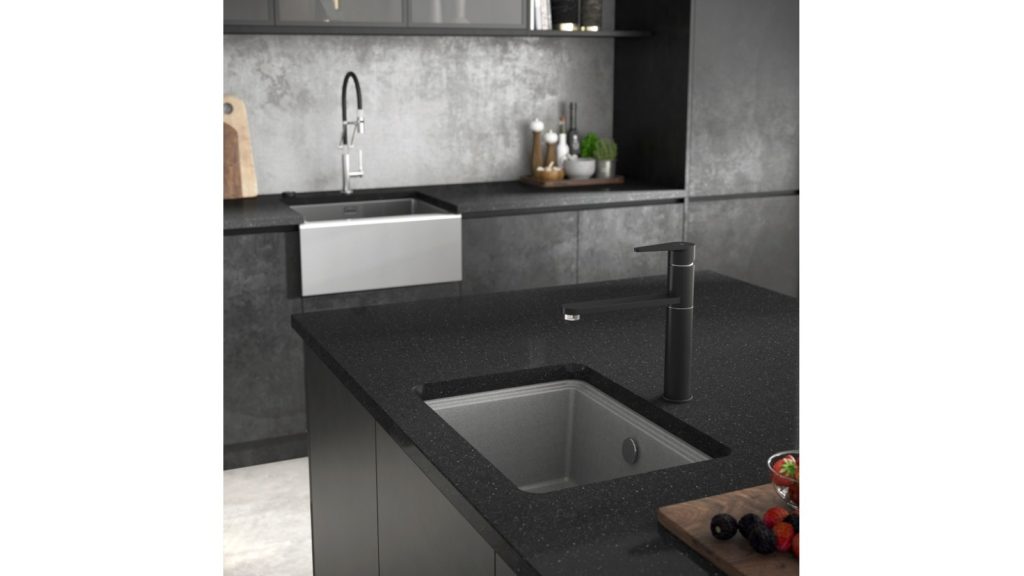
Shown in a grey metallic granite, Denton from Abode measures 500 x 363mm, enabling installation in compact kitchens. It comes complete with a 10-year warranty.
The inset sink is still the favoured model for ease of installation, but slim rims and the ability to undermount the models means there is more flexibility for the designer.
Leanne Adamson of Abode explains: “Undermounts that can also be inset, to create the ‘undermount-look’ are seeing increased popularity thanks to the ability to install them in laminate worktops, helpful when the budget can’t stretch to solid surface.”
Symbiotic design
Whatever the choice of the client, communications manager of Franke UK Jeannette Ward comments: “Sinks and taps are very much a symbiotic purchase reflecting the design and functional needs of the consumer.”
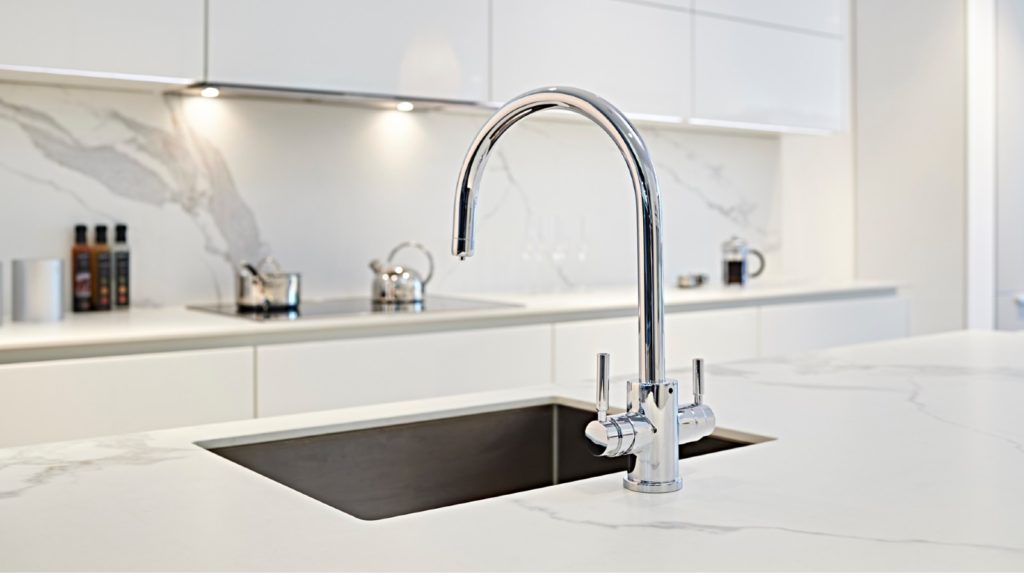
Consumers have recognised the convenience of an instant hot water tap for drink and food preparation, as well as cleaning. The Phoenix 1912 3-in-1 Instant Hot tap from Perrin & Rowe is shown in chrome but available in eight finishes
And consumers are now prepared to spend more on the wet area, as Jonathan Britton of Perrin & Rowe reveals: “According to Mintel, around 9% of a kitchen budget is spent on sinks and taps – making this sector worth around £365million (UK, 2019).
“But it’s a spend that punches above its weight. The sink is one of the most visible elements of the kitchen, and the tap the most used. We are seeing customers invest more in these areas.”
It has seen an increase in more functional kitchen taps from pull-out sprays to models which offer additional filtered or instant hot water supplies.
Carrie Bell of CDA says: “In taps there is still a lot of interest in models with a pull-out spray. I think growth for this sort of tap is inspired by customers seeing them in TV cookery programmes.”
However she warns: “We do feel that retailers should be careful when putting this type of tap on display because many of the models on the market need above 1 bar pressure to operate correctly.”
COVID impact
Going forwards, with its firm focus on hygiene and food preparation, of course if’s unsurprising COVID has and will continue to play its part in sink design in a post-pandemic landscape.
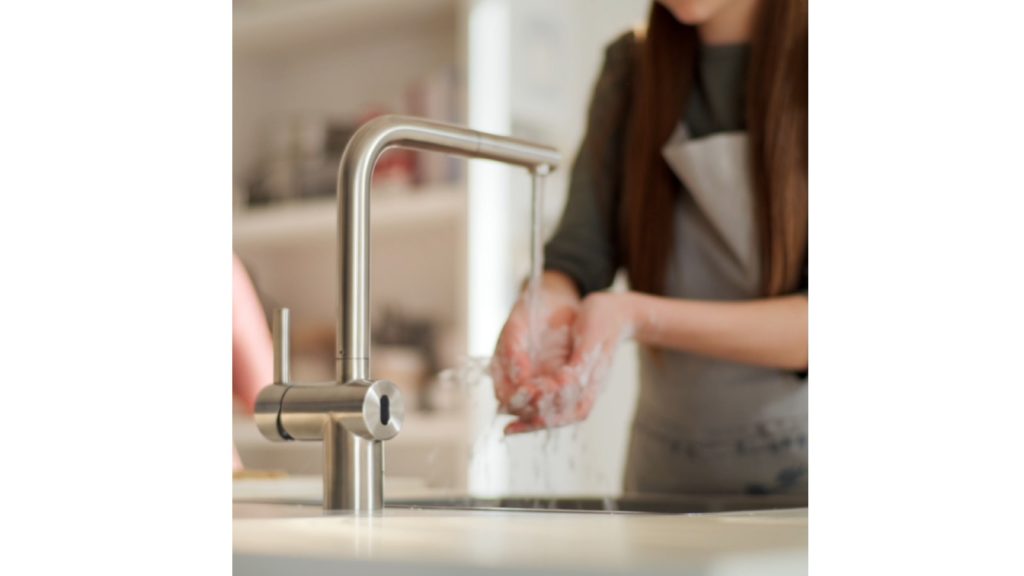
Made from stainless steel, the Atlas Neo Sensor tap from Franke combines touch-free technology with single lever manual operation. It comes in a choice of swivel spout or pull-out nozzle options and is backed by a 5-year warranty
It will not only shine a light on existing sink models which already benefit from antibacterial protection but is now seeing further development of kitchen mixer controls, borrowing from the bathroom environment, to offer consumers further reassurance in the home.
Grohe now offers kitchen taps with push button SmartControl, which was developed for its showers.
Adam Logan points out: “Standard kitchen mixer taps are evolving; many models are doing away with the kitchen lever and opting for alternative modes of operation that reduce the need for direct contact with the tap’s surface.
“One of the latest ways of thinking is to replace the tap lever with a button at the end of the spout that can easily be pushed with the wrist, forearm or elbow to activate water flow.”
And, most recently, Franke has introduced a touch-free, sensor tap, as Jeanette Ward of Franke UK explains: “The pandemic has naturally heightened awareness of hygiene with more frequent handwashing a given. And with more cooking and baking at home, people have also realised how many times your hands need washing and rinsing in the course of a normal day.
“We’re recently plugged a gap in our portfolio with the new touch-free Atlas Neo Sensor tap for consumers who want the benefits and convenience of hands-free operation.”
She states “multi-functional taps, and those with sensor activation and electronic operation, are a genre that is definitely one to watch.”

The New York sink, from Reginox, is manufactured using a deep drawing technique without welding or folded seams and comes in a choice of seven sizes. It has a moulded ‘comfort plug’ for hygiene and comes with a lifetime guarantee.
Certainly sinks and taps will continue to evolve along with demands for a variety of designs and meeting the needs for ever more hygienic wet areas, as Jeanette Ward concludes: “Product innovation will continue to develop in line with the evolving requirements for hygienic, sustainable, convenient and efficient products.
“The choices we make are important for our happiness and wellbeing in everyday life and consumers will seek out products that tick all these boxes for them.”



